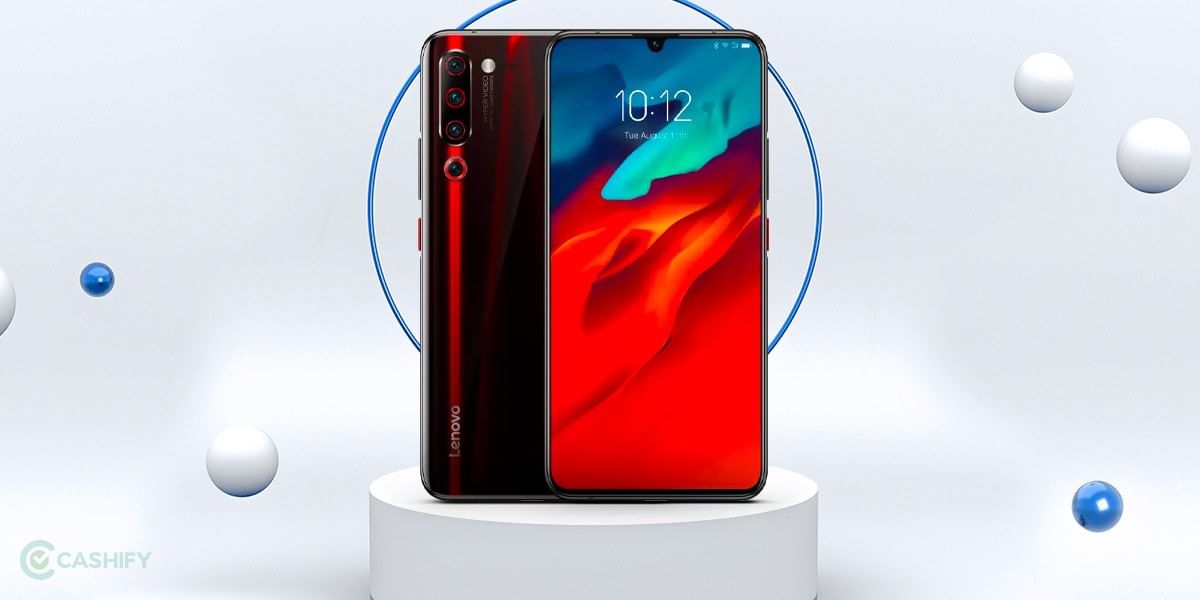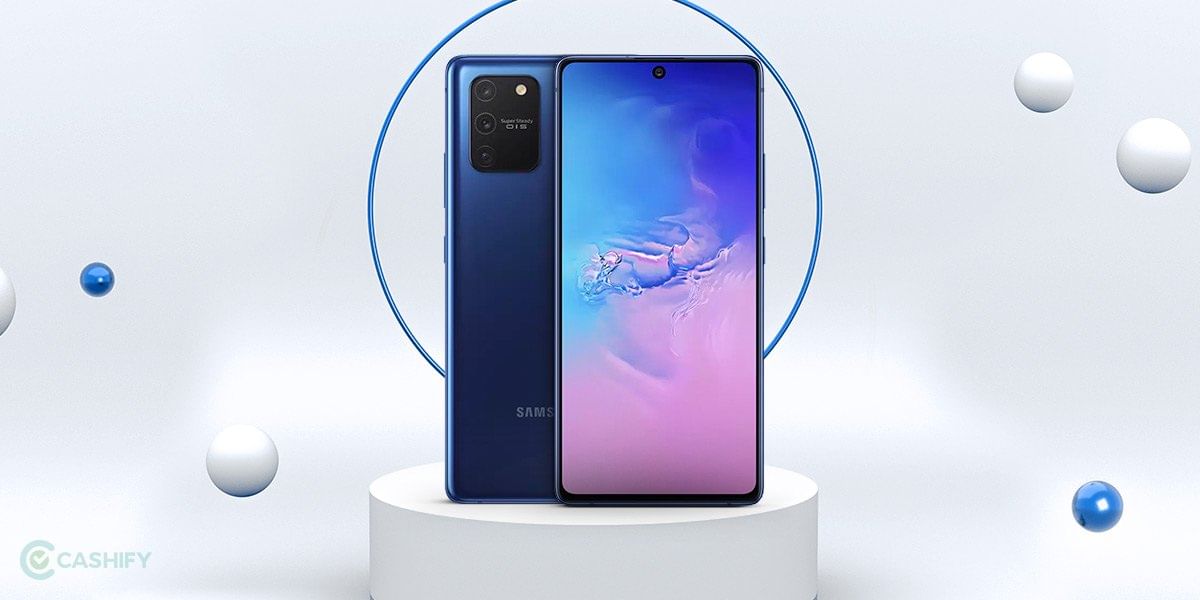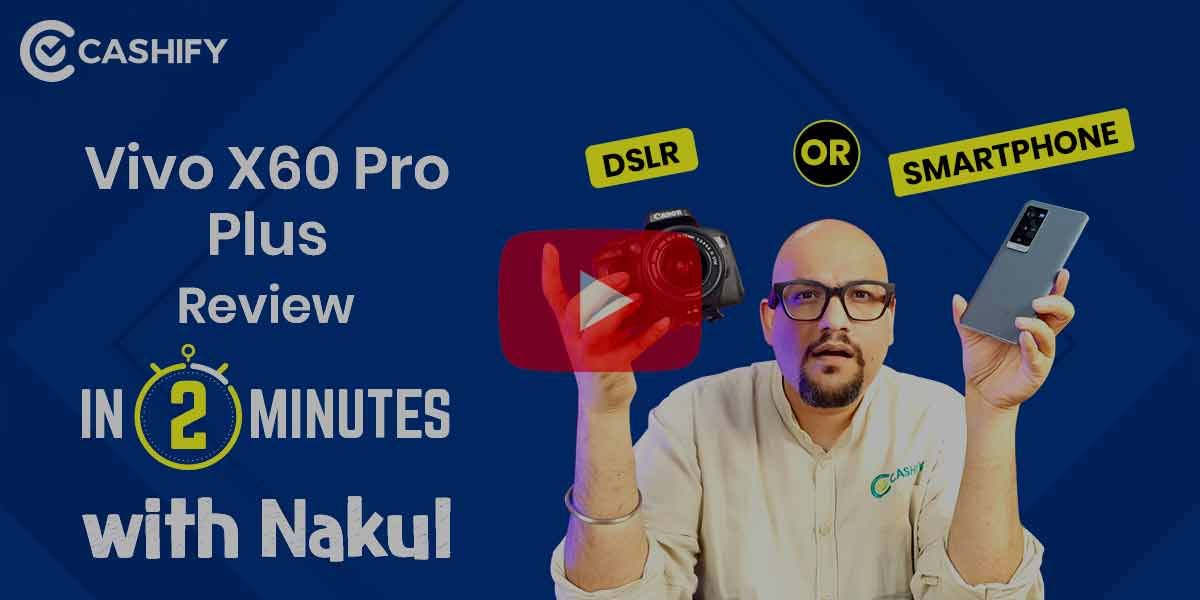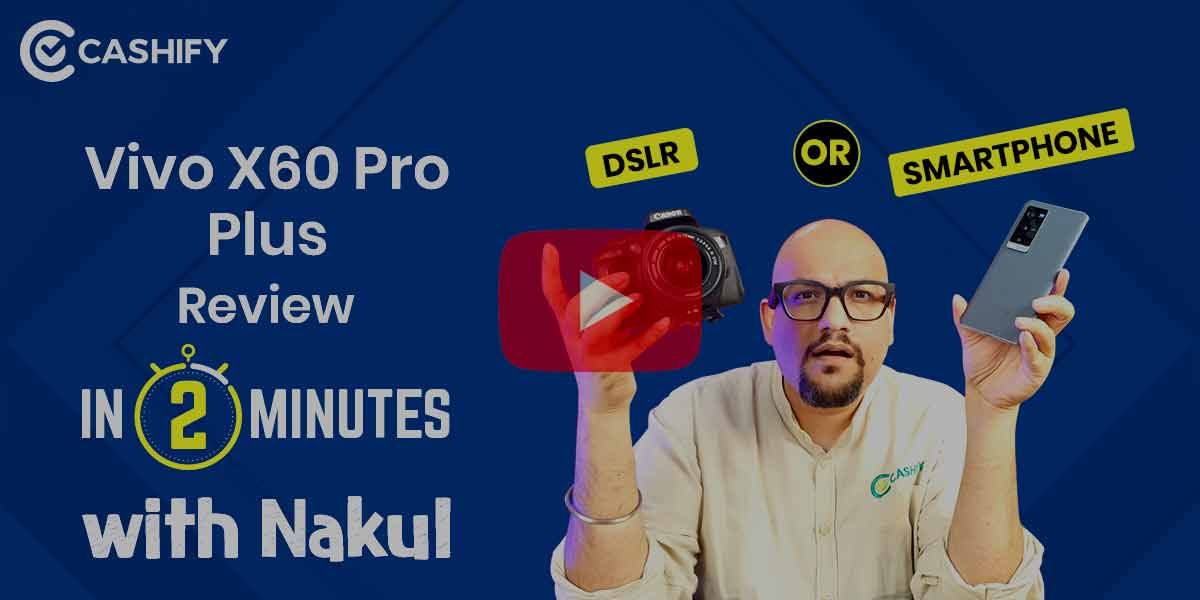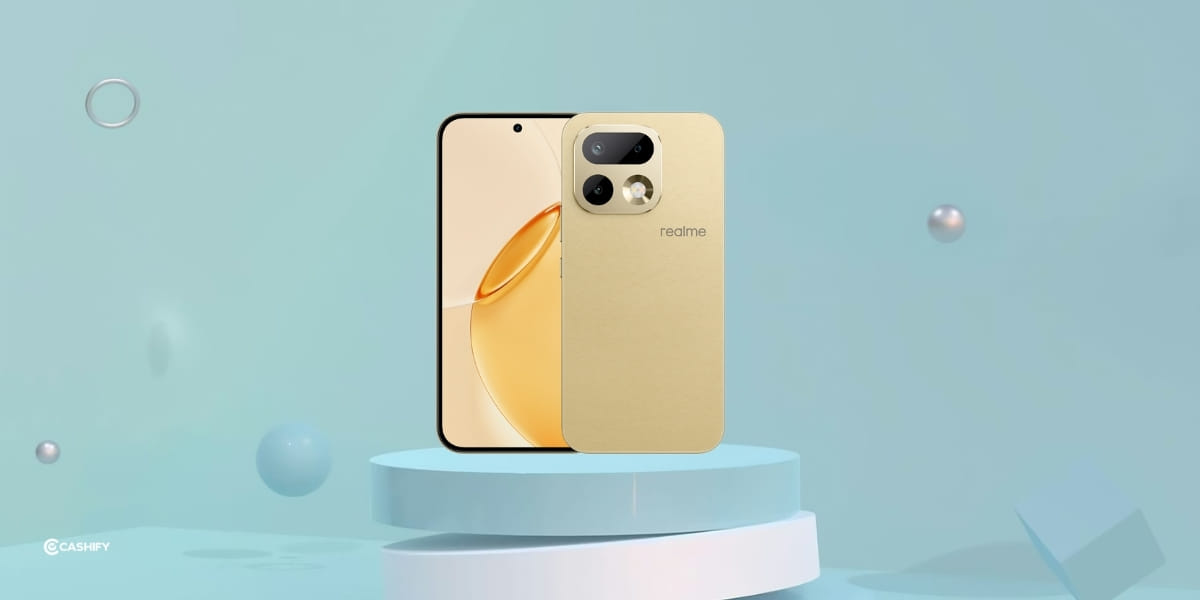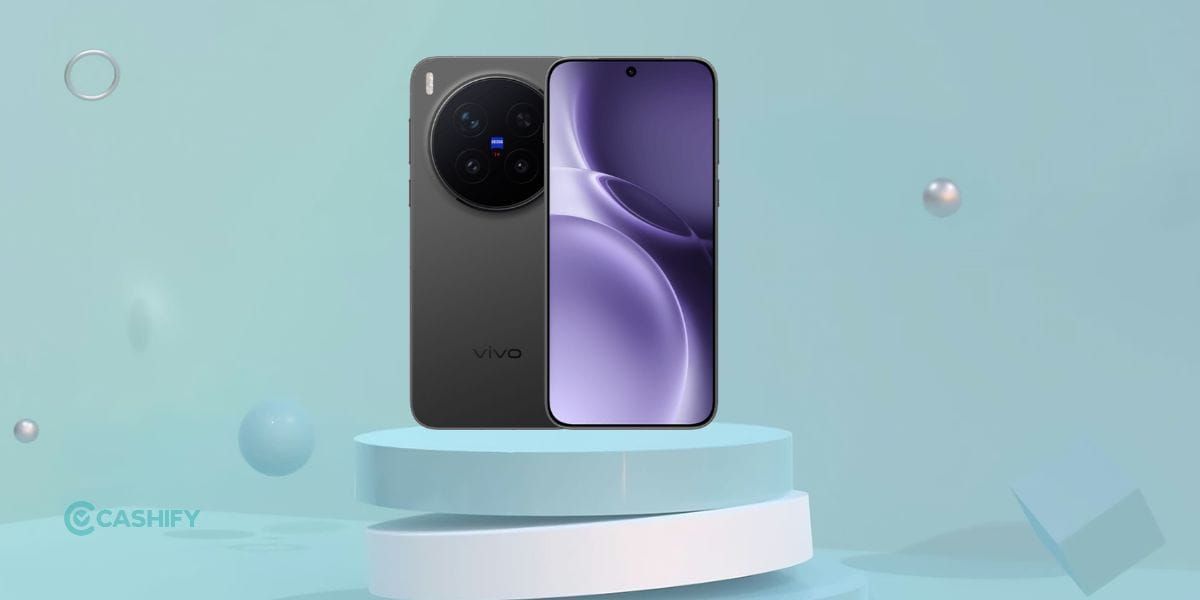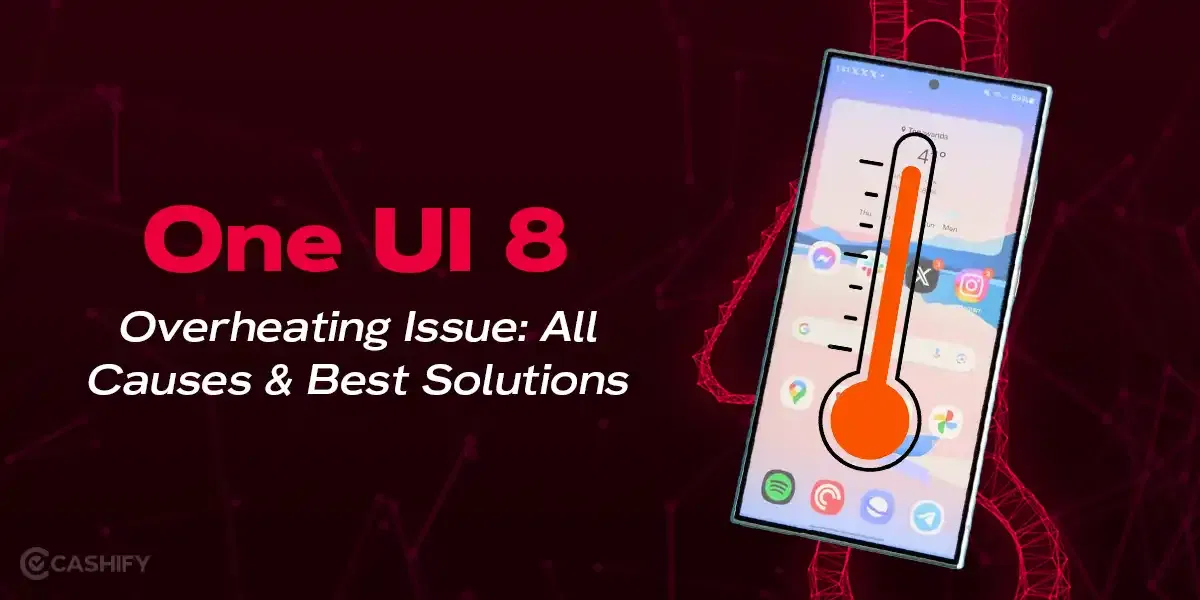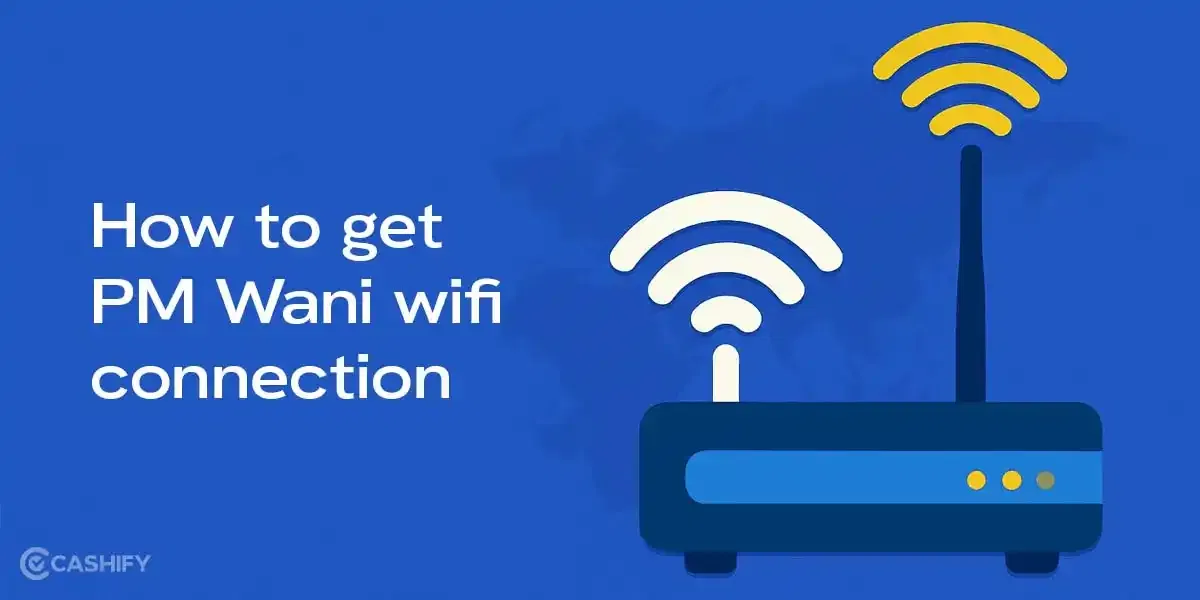Introduction
Latest in the offering from Vivo, the Vivo Z1X is the sibling to Vivo Z1 family and brings 48MP onboard which is a major improvement over the 16MP sensor on Z1 Pro. The phone is a perfect amalgamation of some of the best from Vivo Z1 Pro that the Chinese manufacturer enhanced further to bring Vivo Z1X into existence. With a price tag of Rs 14,990/- (base variant), does the phone got it all to justify its price? Is it worth a buy? I got my hands on Vivo Z1X for a couple of days. I used the phone and tested every aspect. Here’s everything you need to know about Vivo Z1X that’ll help you decide whether you should go for it or not.
Read also: Oppo F1 Review
Prices in India, Variants, Availability
The Vivo Z1X arrives in four distinct storage trends and two colour variants. The device is available in Fusion Blue and Phantom Purple that incur no price change when it comes to choosing your favourite colour with any storage variant. Moving on the pricing, the Vivo Z1X 6GB+64GB is available at Rs 15,990/-, the 4GB+128GB variant carries a price tag of Rs 14,990/-, the larger 6GB+128GB is available at Rs 16,990/- and finally, the largest 8GB+128GB variant has a price of Rs 17,990/- on Vivo India website and Flipkart excluding any deals & discounts on it.
Here, both Vivo & Flipkart are offering Exchange Offer where the discounted amount changes a bit based on the phone you want to exchange with the max cap of Rs 14,000/- on the latter. There’s a 5% off on Axis Bank Buzz Credit Card & Flipkart Axis Bank Credit Card as well and finally, there’s No cost EMI to go with where you can purchase the phone in EMI without paying any interest on it with selected banks.
Box Contents
Talking about the contents in the retail box, Vivo Z1X arrives in a decently packaged box. The contents include a TPU case, a pre-applied protective film on the handset itself, quick start manual, a USB Type-C Cable, a power adapter, a SIM ejector tool, and earphones.
Read also: Honor 9x Review
Specs at a Glance
Vivo Z1X arrives with an octa-core Snapdragon 712 chipset onboard manufactured on a 10nm node. The chipset includes two 2.3GHz Kryo 360 Gold high-performance cores and six 1.7GHz Kryo 360 Silver power-efficient cores onboard along with Adreno 616 GOU to process graphics on this phone. The device is equipped with 64/128GB of storage and 4/6/8GB of RAM options available at your disposal. The device uses UFS 2.1 storage system which is not as quick as UFS 3.0 but that justifies the price tag it falls in so yes, it is a great feature to have.
Design and Build Quality
Vivo Z1X is an unapologetically glossy and flashy variant that offers a majestic switch in the design. Instead of sticking to common gradient back panel design that has become mainstream, Vivo Z1X uses a gaudier colour scheme which alternates with varying shades of the same colour. This is different from what Vivo Z1 Pro managed to pull off with its dual-tone gradient design and it now looks pretty premium. The back panel is made up of polycarbonate. The rear panel is glossy for sure and slippery.
The phone weighs at 189.6 grams which is although lighter than Vivo Z1 Pro or Oppo A9 2020 but it is bulky. The phone is too tall and it is sort of uneasy to reach the topmost buttons on the sides of the top section of the screen without adjusting and stretching fingers trying to tap on the upper section. I found the device a bit difficult to use with one hand, although it depends on the size of the hands you have as well.
The rear panel has Vivo Z1X’s triple camera setup arranged in a camera bump on the left side of the panel along with Vivo branding and that’s all. The camera bump has a slide bumped up the rim to prevent the glass from scratching and ruining the overall camera experience on the phone. At the front, you will see a decent and minimal waterdrop-shaped notch with relatively thinner bezels and chin and has Schott Xensation 3D glass protection at the front which is a Corning Gorilla Glass alternative. Next up, the right side has power buttons and volume rockers, the left side as a dedicated Google Assistant button and a SIM Card tray to pull-off followed by a USB Type-C port, 3.5mm headphone jack, and a noise-cancelling microphone at the bottom.
The SIM card tray is a dual card slot that will hold two nano-sized SIM cards. There’s no microSD card slot neither dedicated nor hybrid onboard. Overall, the phone does have a good build quality with a flat form factor at the back that instils confidence in the users as well as the look is more understandable and subtle rather than clinging to a glamorous design smartphone.
Read also: Moto E6S Review
Display
If you want to know the specifications of the display mounted on Vivo Z1X has, it is a 6.38-inch Super AMOLED panel with a resolution of 1080×2340 pixels and 404PPI. It has a 19.5:9 aspect ratio and thanks to the sAMOLED panel, the phone also has Always-On feature as well.
So I tried and tested the phone and to be honest, the display looks refined and a major improvement over LCD panel that Vivo Z1 Pro arrived with. The Super AMOLED panel tends to produce darker blacks and brighter whites. It also has a good viewing angle and I didn’t see any distortion even after I used it at an angle.
The display is vibrant and adds to the excellent battery life the phone can provide with a relatively smaller battery life which wouldn’t have been possible otherwise with an LCD panel. The colour temperature is cool by default but Vivo Z1X offers customizations to the colour temperatures as well. Overall, the display has a very good brightness onboard which is great for viewing it during a sunny day although the reflectivity of the display which could hamper your viewing experience in bright day time. However, you wouldn’t necessarily suffer from a washed display even at high brightness.
This makes the device a must-have companion for binge-watching movies. The display also has an anti-flickering mode that takes away the excess strain that flickering displays put on eyes. There are other features on board when it comes to protecting the eyes from excessive brightness such as eye protection and auto-brightness.
Performance
Talking about the performance that Vivo Z1X exhibits, it is surely a powerful device that can handle multitasking and day to day business without any hassle. The app with its custom UI brings many features onboard such as the Ultra Game Mode aids in handling gaming-related stuff, thereby enabling you to play even graphics-intensive apps like Asphalt 9 and PUBG Mobile. I played both basic and intensive games as said and the phone didn’t warm up even after a few sessions although if you play more, the phone will likely warm up, Snapdragon 712 AIE does handle processes pretty sweetly.
The phone has a score of 1,917 points on Geekbench 4’s single-core while it manages to reckon 6,014 points on its multi-core test. Its AnTuTu score was recorded at 1,56,933 points. Finally, the device scored 59fps at the GFXBench T-Rex test and 23fps on GFXBench Manhattan 3.1 where both are graphics-intensive programs that I ran to render the performance stats. Overall, the phone won’t disappoint even if you are a power user, although there are some limitations. I would recommend using your phone in a short burst if you want to do any tiring task such as streaming an HD movie or playing any intensive games as it is good for both processor and the battery.
Software
Although it has Android 9 Pie, it comes with a custom UI from Vivo called FuntouchOS 9.1 which doesn’t measure up to my expectations. The UI mimics Apple’s iOS more than staying close to its root with Android Pie. This means that the Shortcut Center is all available when you flick the finger upwards whereas dragging down the notification panel would only show notifications.
The UI is as cluttered as it can be with tonnes of bloatware that include apps from Oppo as well as third-party apps. The UI looks a lot like iOS which is great for someone who wants an iPhone experience on an Android smartphone without rooting it or something. Now that Android has made a move to more aesthetic gesture-based navigation, Funtouch OS 9.1 sports a similar feature although it feels half-baked but hey, there’s always navigation buttons to bounce in case if you aren’t someone who enjoys the gesture navigation. There’s no App Drawer so all apps and features are right there on the home screen.
But there is a silver lining using the Funtouch OS 9.1 is that the UI allows users to clone apps so that I was able to use two Instagram accounts on two different apps on the same phone. The UI has a heavy base of customization options right from fonts to themes to whatnot. There’s a built-in feature to hide files, documents, photos, etc. There’s a native Dark Mode which is something you would otherwise have to wait until Android 10 drops in although there’s a slight chance here. Instead of relying on darker black, the Funtouch OS 9.1 uses a darker shade of gray as the background for dark mode.
There is a tonne of game-centric features as well including Ultra Game Mode which kinds of work as OnePlus’ Fnatic Mode, picture-in-picture mode where the instant messaging apps open as a floating window while you are playing any game you throw at it. Overall, the Funtouch OS is an amalgamation of both goods and bads and it won’t take you much time to adjust to it.
Cameras
The optics on the phone are single front and triple camera setup at the rear. First of all, the front camera has a 32MP sensor with f/2.0 aperture, 0.8micron pixel size, and 1/2.8” sensor size. Coming to the rear camera assembly, it has a primary 48MP sensor with PDAF, 0.8micron pixel size, and an aperture of f/1.8 followed by an 8MP ultrawide sensor which has an aperture of f/2.2 and finally, there’s a 2MP depth sensor on board with an aperture of f/2.4, pixel size of 1.75micron and 1/5.0” sensor size onboard.
With that being said, Vivo Z1X brings the Z-series onboard with 48MP sensors and overall, the phone does have the upper hand in terms of cameras as well.
Talking about the primary sensor, it is a Sony iMX582 sensor which was seen with Xiaomi Redmi K20 as well. The quality of the photos it could capture is spot-on with good details in good lighting conditions. The camera uses a 4-in-1 pixel binning feature to capture excellent photos at 12MP resolution which can be further bumped to 48MP modes where the pictures get crisper and more detailed with higher resolutions. The device has a depth sensor that aids in taking excellent portrait photos as well with background blur that can be adjusted later as well. Here, the separation of the subject and background turned out to be awesome but the overall application that was employed to adjust blur effect isn’t that consistent.
Thanks to the f/1.8 aperture mounted on the 48MP primary sensor, it is able to capture quality low-light photos as well although the details aren’t that spot-on and tend to be noisy and grainy. This is where the dedicated night mode comes into play as it lights up the images capturing detailed photos with vibrant colours and these photos look sharp as well. The low light photography isn’t that impressive now that I have reviewed Motorola One Vision and a few other phones in this price range.
Moving onto the 8MP wide-angle camera, the photos are wide with a higher field of view although the quality remains inferior to that of the main sensor. The sensor needs a look or fine-tuning although the photos are more than average for a phone falling in this price tag.
The front cam is a 32MP sensor nicely tucked inside a small-sized notch and it is capable of producing punchy colors for selfies. The camera app does turn on beauty mode by default, this makes the skin texture a bit soft but overall, the quality is excellent when it comes to the front selfie camera. I found the selfies to be detailed and the background blur effect or bokeh worked fine with proper edge detection and processing the finished image as one captured from a high-end smartphone.
The phone can take 4K videos at 30fps and the same with 1080p videos. The videos captured using 4K mode are jerky as they lack stabilization while the videos I captured at 1080p resolution turned out to be a bit stabilized. Here as well, the people would find it difficult to digest the fact that Vivo has capped the cameras at 30fps which they could have gone up to 60fps at least for the FHD+ resolution.
Read also: Battery Tips: How To Extend Your Smartphone Battery’s Life
Battery Life
Vivo Z1X doesn’t fail to impress as it arrives with a large 4,500 mAh battery which although is smaller than the one available with Vivo Z1 Pro but the performance is fairly similar. I found out that the phone doesn’t need to charge the battery for at least a day even after I used it for almost two hours of gaming sessions and other activities. I found out that medium usage with social media apps, small gaming sessions, video streaming, and phone calls last for a whopping 10 hours straight.
I did an HD video loop test and the results were amazing as the phone managed to stay turned ON for 18 hours and 52 minutes which I think is one of the highest ever with a 4,500 mAh battery that you would find on other smartphones. This provides the phone does have an excellent life and wouldn’t live its users stranded in the middle when using it. The phone arrives with battery optimization mode i.e. Low Power Saving Mode and Super Power Saving Mode where the latter disconnects everything except calling, messaging, and the clock app.
The humongous battery on Vivo Z1X gets a 22.5W fast charger which can charge the battery to half of its capacity in just 38 minutes. It took under an hour & a half for the battery to fully charge. Other than that, the phone has a reverse charging feature which allows the phone to act as a power bank so that other devices can latch onto it and charge themselves.
Audio and Biometrics
The sound buzzing from its bottom speaker is quite rich and loud if you are listening to sound voice notes or music and the phone wouldn’t disappoint you with it. Of course, there’s a dedicated 3.5mm headphone jack in case if you want to hear crystal clear sound with high-quality bass on Vivo Z1X. All in all, the phone has an average audio quality be it the loudspeaker or the front-firing earpiece, so that’s a relief since it is not a negative point here.
The in-display fingerprint scanner is pretty snappy and it wouldn’t take a second to unlock the phone, and it is among the quickest when compared to other smartphones in the same price segment. It is also quite convenient although face unlocks feature works beautifully as well. It directly unlocks the phone on recognizing your face without taking you towards the locked screen so that’s something a phone geek might notice. It remains to be seen if the face unlock and the in-display fingerprint scanner has the same level of responsiveness after months of usage.
Read also: How To Use Dual WhatsApp On The Same Phone
Pros & Cons
Pros:
Excellent Battery Life
Camera quality is good
The beefy processor can handle a lot
Cons:
Back panel is made of plastic
FountouchOS need improvements
There’s no expandable storage
The smartphone industry is cluttered with options to choose from. No matter what price segment you are interested in, there are almost dozens of options that you can choose from which is why Vivo Z1X requires to make a place for itself if it wants to stand out. It turns out, among the competitors Realme X, Redmi Note 7 Pro, Motorola One Vision, and others, Vivo Z1X does have a place of itself.
The phone sports an unapologetically brilliant gradient design, to be honest, and has a vibrant and flashy sAMOLED panel which is a major improvement over Vivo Z1 Pro. Furthermore, the device brings a 48MP sensor onboard which is also a first for Vivo’s Z-series. The camera is something I would recommend a must-try if you are checking out Vivo Z1X at any retail store.
Battery life is something I will surely flaunt if I am using Vivo Z1X as my daily driver. But there are a few shortcomings that the phone attract which are common for any smartphone irrespective of its budget or a premium flagship phone and could be different. For Vivo Z1X, its user interface is something that irks me although it is full of customisations, it is still heavy and wouldn’t appeal to someone who likes a near-stock Android experience.

